Ever seen a bird at your feeder and wondered what type of bird it is? If you live in Southern California, it’s likely to be one of these common backyard birds. Whether you need help identifying a bird, or you’d like to know what birds you can expect to attract with your new feeder, this list is for you. Here are the top ten most common backyard birds of Southern California and which foods attract them:
House Finch
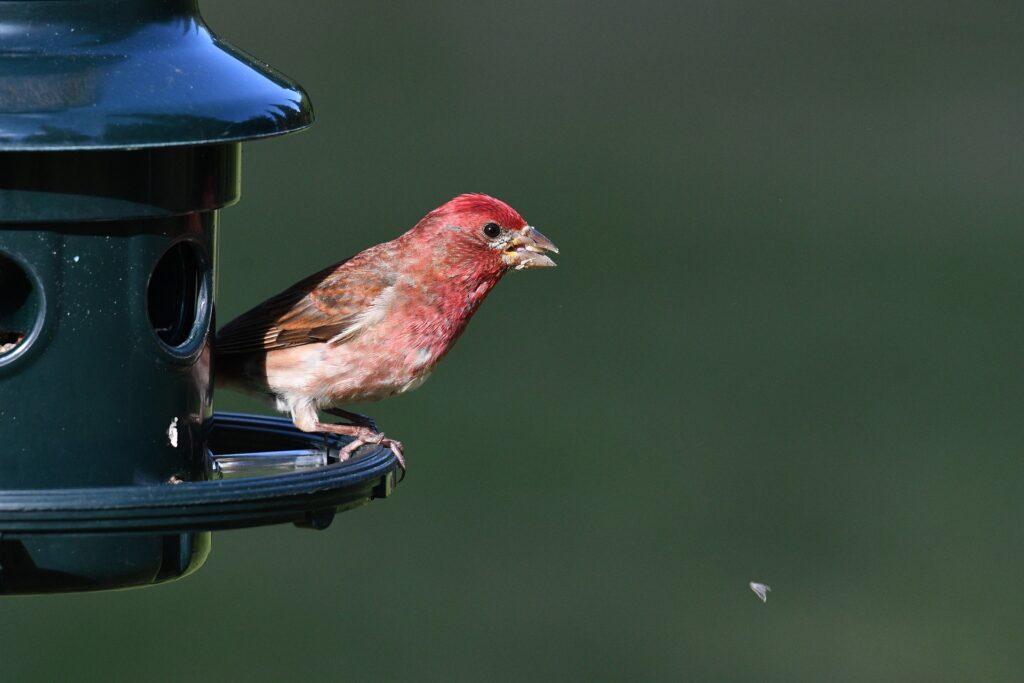
House Finches are small birds that are known to frequent SoCal feeders regularly. The male has a rosy face and breast, while the female is a less opulent shade of brown. You’ll find these birds in both rural and urban areas, as they’re some of the most prolific bird-feeder visitors in the area.
Favorite foods: Black-oil sunflower seed, Nyjer seed, suet, nectar, and fruits that include peaches, plums, and strawberries.
Allen’s Hummingbird
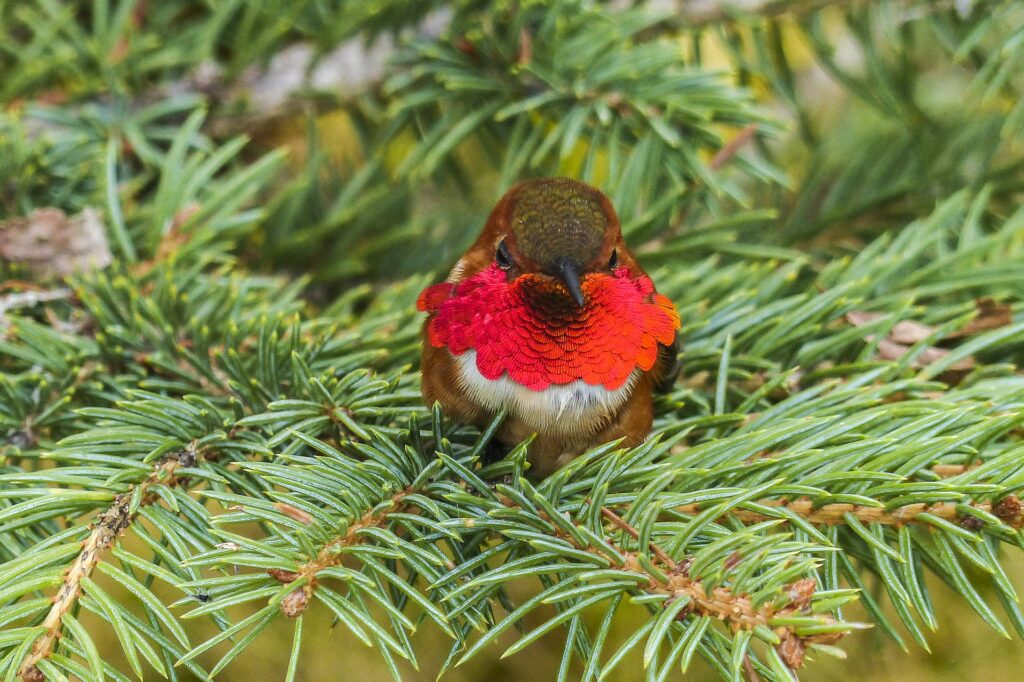
As are most hummingbirds, Allen’s Hummingbirds are small and colorful. You will notice them by their copper orange and green coloring. They also make a distinct “ticking” sound as they fly from flower to flower, or to your feeder, to find nectar. These hummingbirds are mostly found along the California coast.
Favorite foods: Nectar, tree sap, and small insects.
California Scrub-Jay
Check out the hilarious antics of a mating California Scrub-Jay in this video:
You won’t miss these vibrantly blue birds, though you may confuse them for a Bluebird. The California Scrub-Jay, though, has an electric-blue coloring on its back, and a soft gray breast. This songbird has a hooked bill used for eating its favorite food: acorns. They’re also fun to watch during mating season, when they can be seen performing a series of hops and lunges while fanning their tailfeathers.
Favorite foods: Acorns, sunflower seeds, peanuts, suet, and mealworms.
Mourning Dove
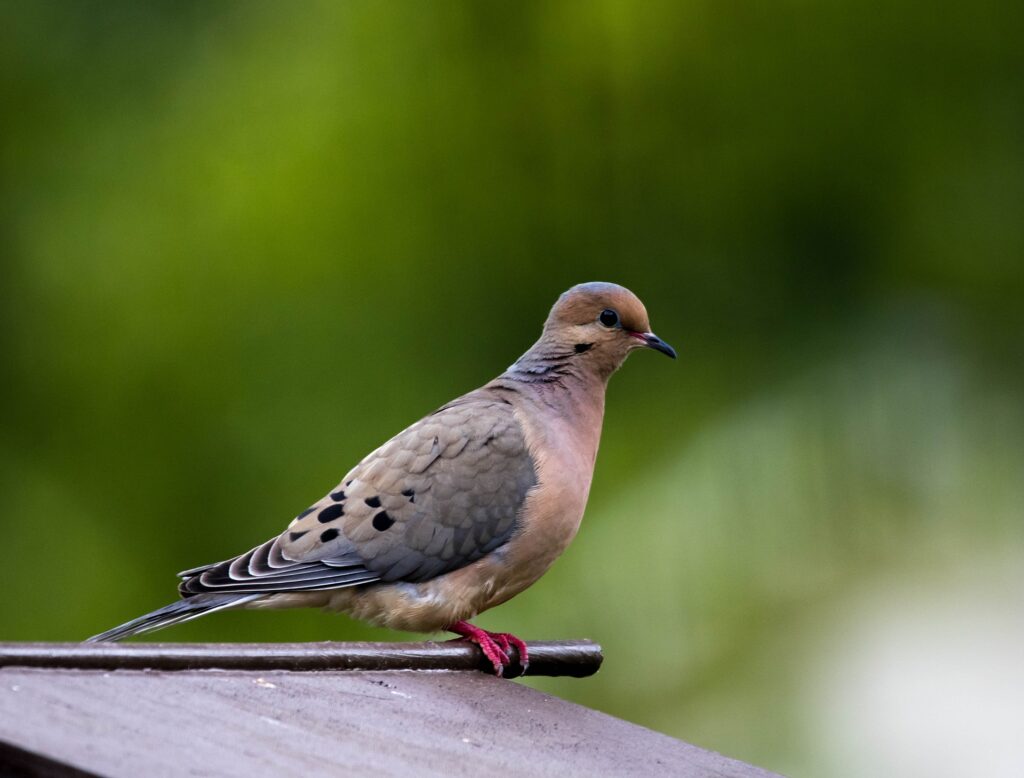
Ever heard a soft coo from your backyard? That’s the sweet sound of a Mourning Dove. And since they mate for life, you’ll often see, not one, but two doves traveling as a pair to your feeder. They also can be found grazing on fallen seed on the ground, and as such are especially vulnerable to predators like outdoor cats. These graceful-looking birds use their song to attract the opposite sex, and the sound of their wing flutter to warn off predators.
Favorite foods: Seeds, peanuts, cracked corn, and berries.
Black Phoebe
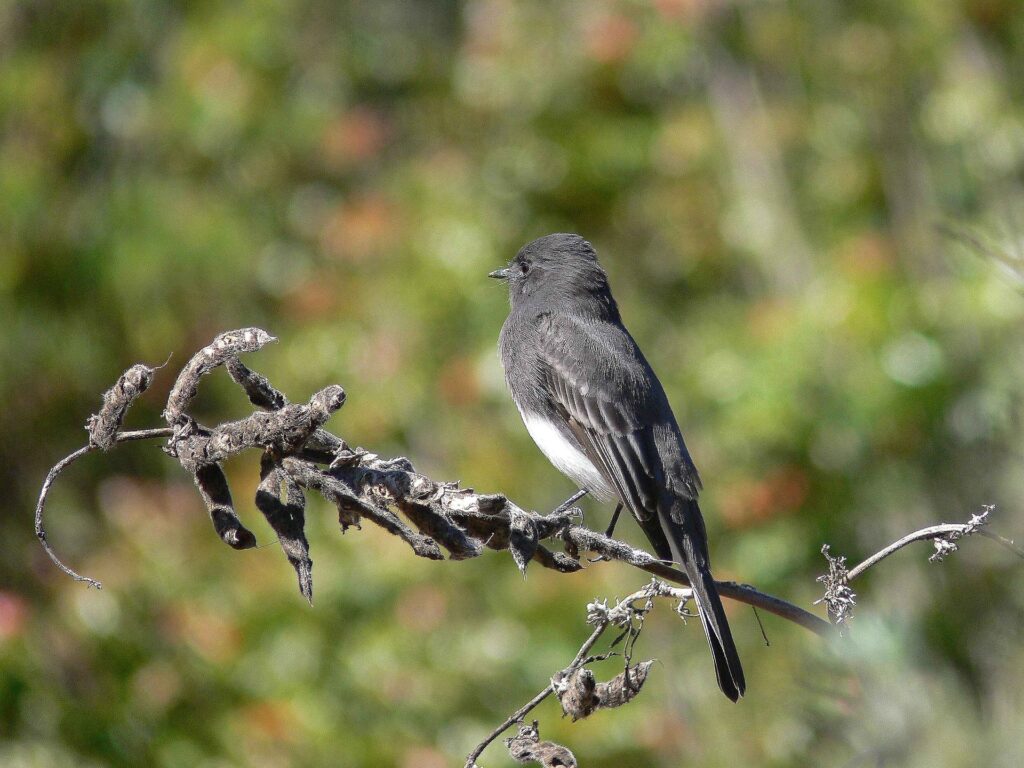
You’ll notice the Black Phoebe by its distinctive peaked cap, soot-black coloring, and contrasting white belly. This flycatcher loves insects of all kinds, so you can often find them perched in places where bugs gather, like creeks and ponds (and your backyard, if you provide the right environment). In fact, if you wish to attract more of them, simply add a water feature, like a birdbath or fountain, to your yard.
Favorite foods: Insects and mealworms.
Spotted Towhee
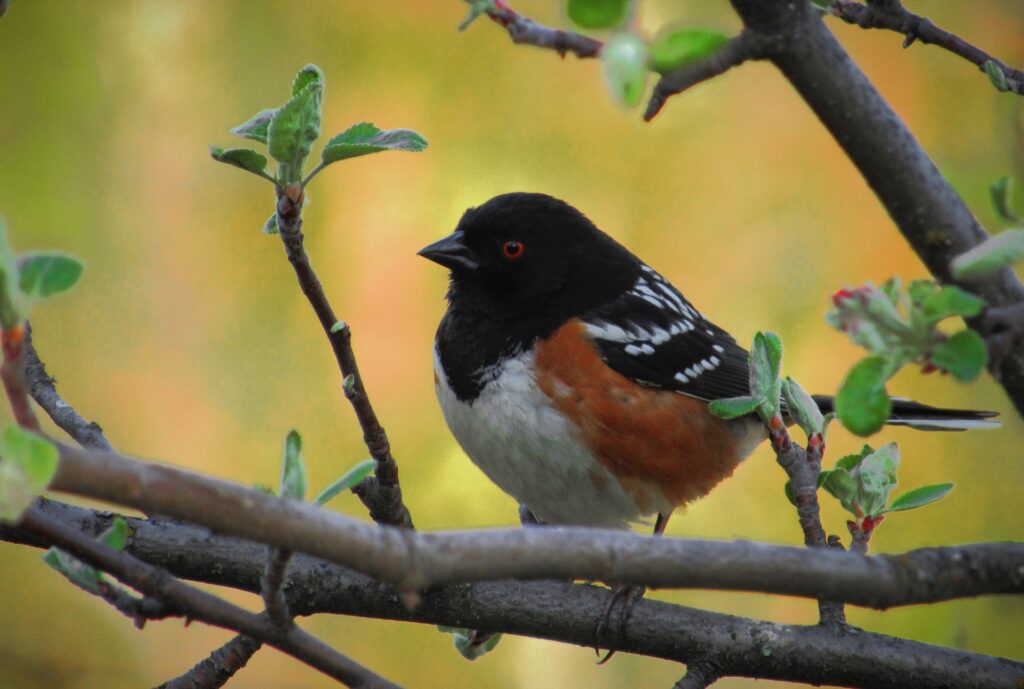
As its name suggests, the Spotted Towhee sports black feathers spotted with white. Their breast is a mix of copper and white coloring. A sparrow on the larger side (bigger than a song sparrow, yet smaller than a robin), the Spotted Towhee is often found in dense shrubbery. These vocal birds use a series of trilling songs, mews, and chirps to call to mates, sound an alarm, or warn other birds in their territory.
Favorite foods: Sunflower seeds, peanut pieces, suet, acorns, insects, and berries.
White-Crowned Sparrow
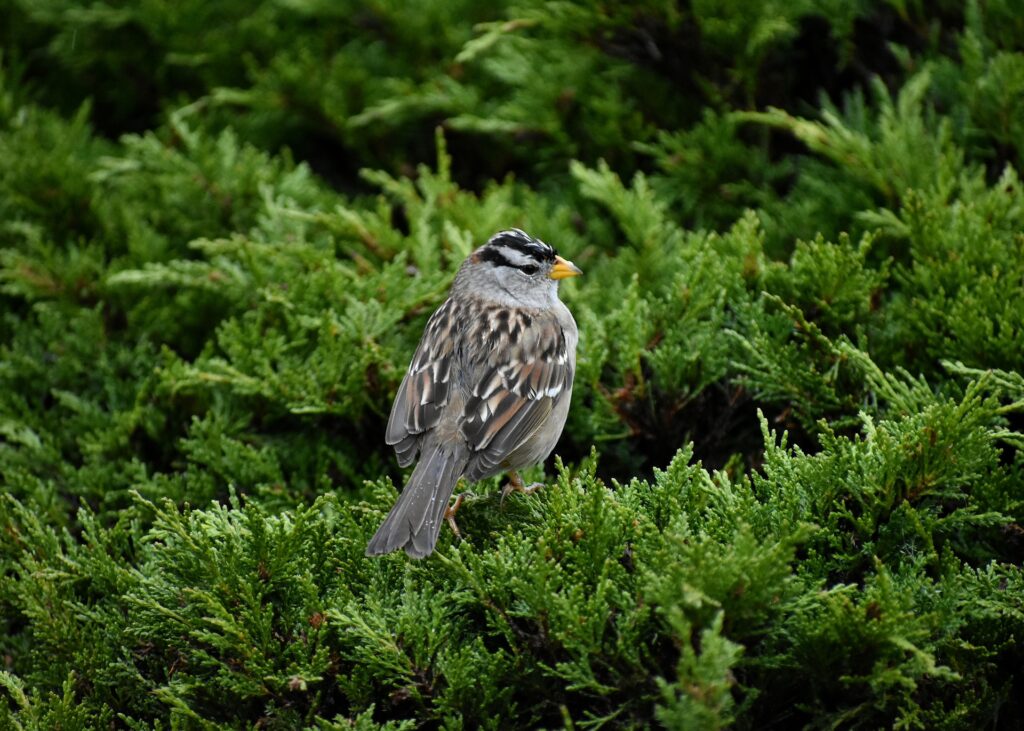
You’ll recognize this sparrow by the black-and-white stripes on its head. A small bird, the White-Crowned Sparrow is most commonly seen up north and in the mountains in summer, and in the lowlands come winter. They can often be found on the ground under your feeders, eating the spilled seed.
Favorite foods: Sunflower and other seeds, suet, corn, insects, and berries.
Anna’s Hummingbird
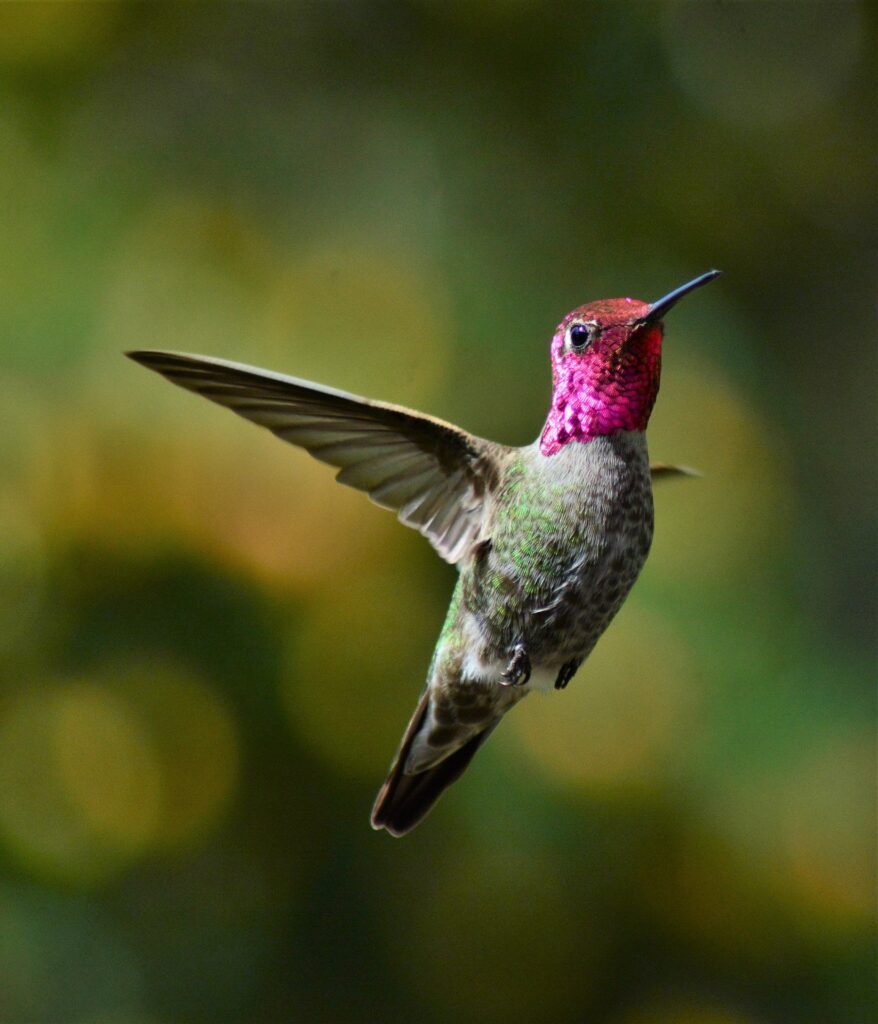
These energetic little birds are known for their vibrant, fuchsia-colored throats and bright, emerald-green backs. Slightly larger than a Rufous Hummingbird, they—like most of their type—Anna’s Hummingbirds are often seen busily flitting from flower to flower. These colorful little creatures love gardens and city parks, and can be seen buzzing and diving during courtship to catch the attention of suitors.
Favorite foods: Nectar and insects.
American Goldfinch
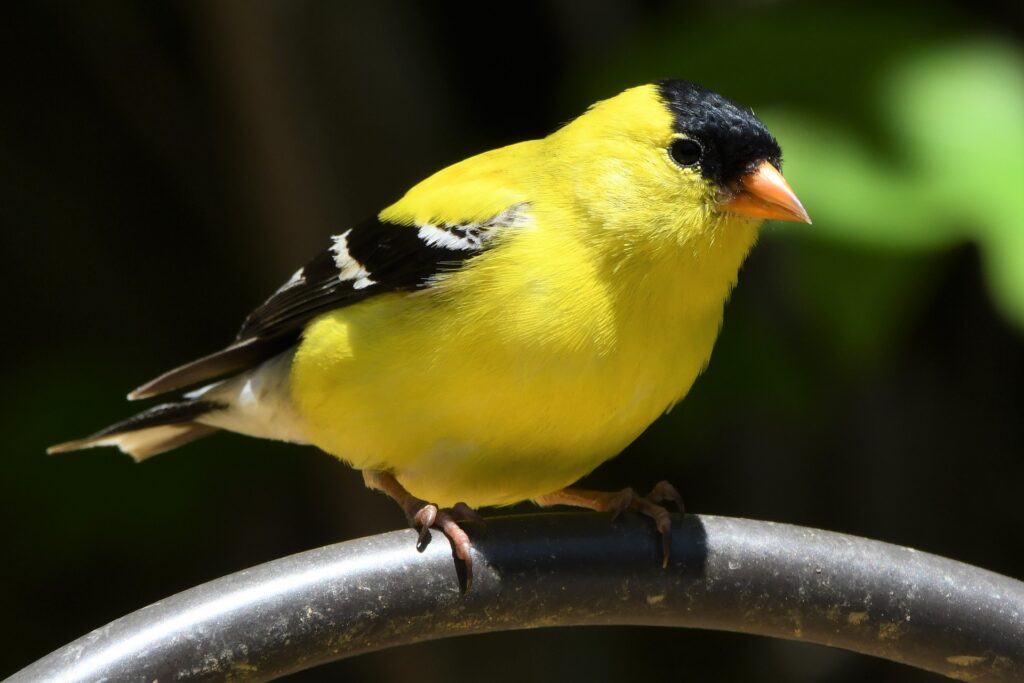
The American Goldfinch is bright yellow with a black cap and wings. If you want to attract more of these stunners to your backyard, plant native plants (including thistles and milkweed). They also love yellow and other brightly colored flowers, like sunflowers and coneflowers. These goldfinches often feed while hanging upside down—and if you’re lucky, you’ll get a front-row seat to some of the aerial acrobatics they’re known for.
Favorite foods: Nyjer and sunflower seeds, suet, mealworms, and insects.
American Robin
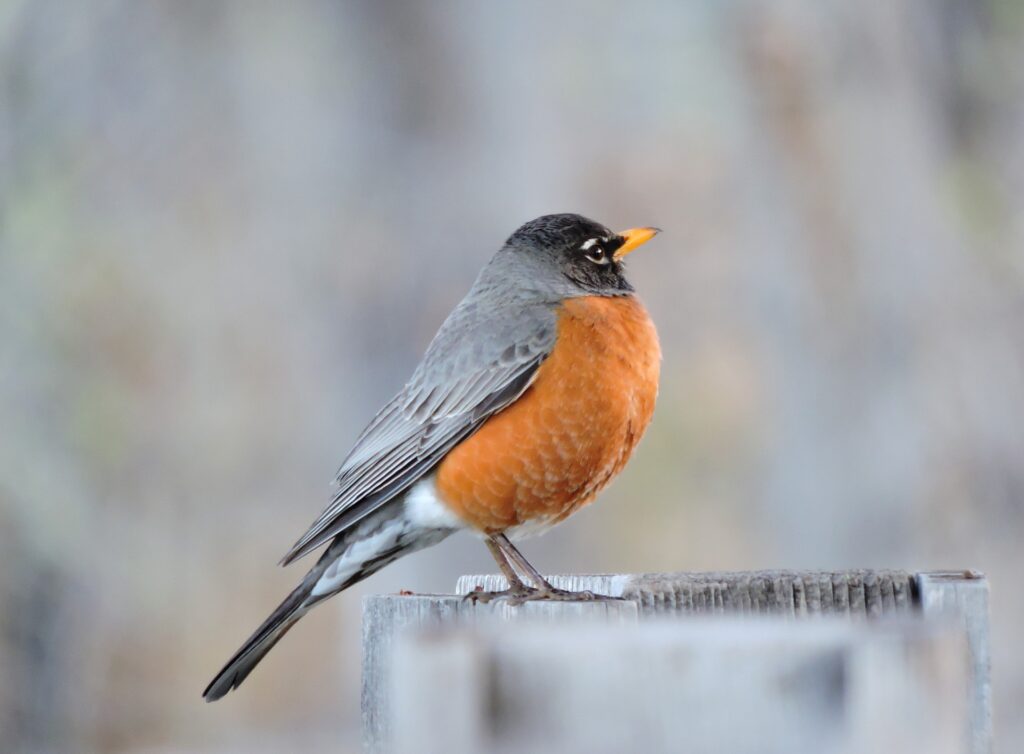
Known for helping Mary Poppins administer a “Spoonful of Sugar,” American Robins are little orange-breasted birds known for their cheerful song. You’ll often hear them before you see them, as American Robins sing their morning and night without many breaks. And as the infamous “early bird that catches the worm,” these robins love eating earthworms, scooping them up from the soil (and often in pre-dawn hours).
Favorite foods: Sunflower seeds, suet, peanut pieces, mealworms, jelly, insects, and fruit.
SoCal Bird-Feeding Checklist
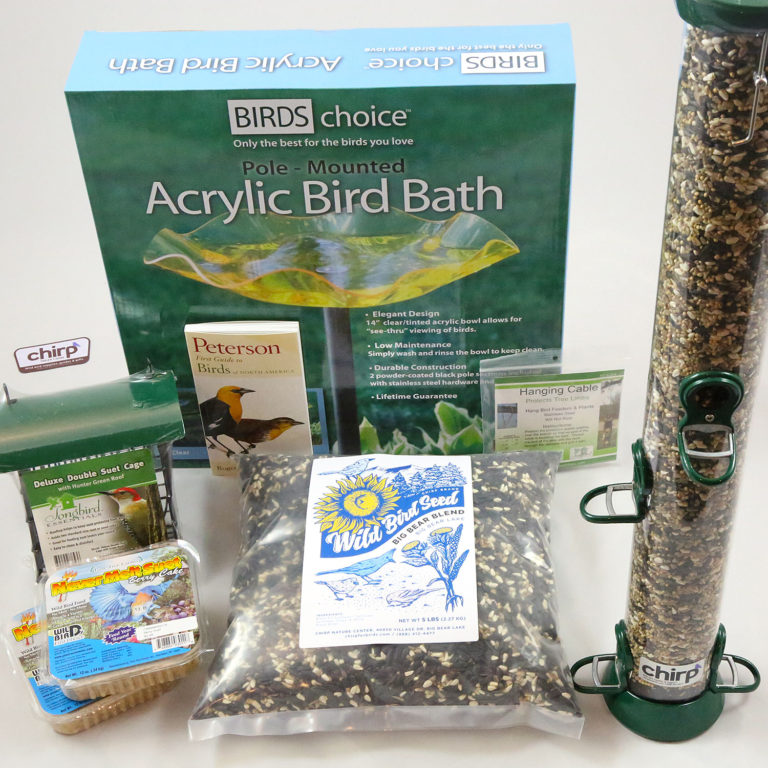
No matter where you live in Southern California, here are some tools for attracting and identifying the birds at your feeders:
- A high-quality seed mix, suet, nectar, or mealworms
- One or more bird feeders
- An illustrated field guide to birds in the area
OR:
- A beginner birding kit that includes everything!
Have You Heard? We’ve Moved Our Nest!
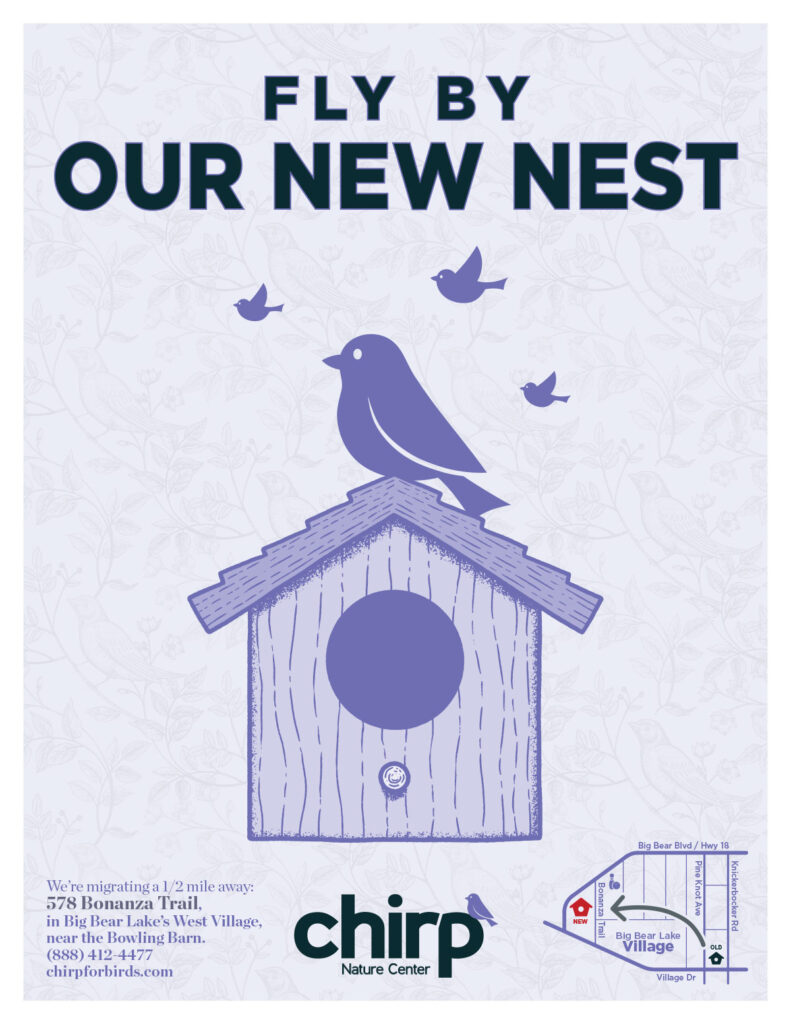
Join us at our new Big Bear location to shop, attend a live bird talk, or come along with us on a local bird walk. Check out our upcoming events and save the date!

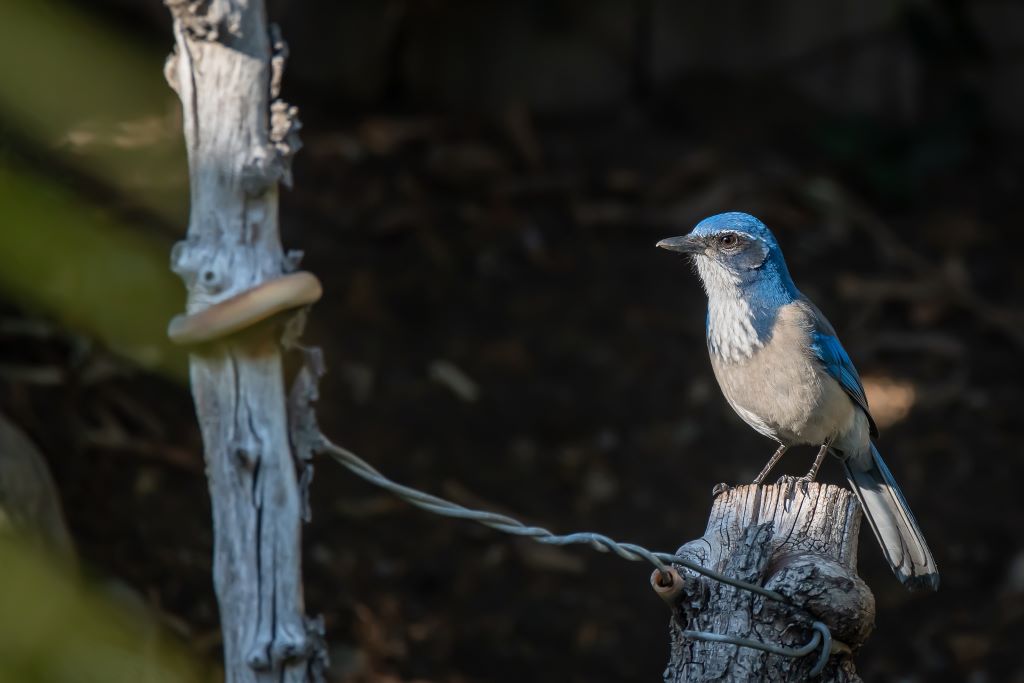

3 comments
As a child I loved watching and learning what birds were in my area. Jackie and Shadow have renewed my interest! A news article in 2019 in my local Cen. CA. Coast paper said “eggs have been laid in……” I went, I saw, I was captured! I belong to a group, Eagleholic Anon now! LOL I’m coming to Big Bear for the Aug 7 In-Person-Walk and am so excited!
We will look forward to your joining us! Eagle on.
I live in Los Angeles and often see small birds at the fig and 7th mall. It’s what I call an open mall because there is no roof and all the doors are direct access to the stores.
The bird’s here are small and have have a odd color of rust feathers that look like v and the rest of the same feather is Grey. With a off set Grey breast, and the top part of the head is also dark Grey and the Beek is dark grey.